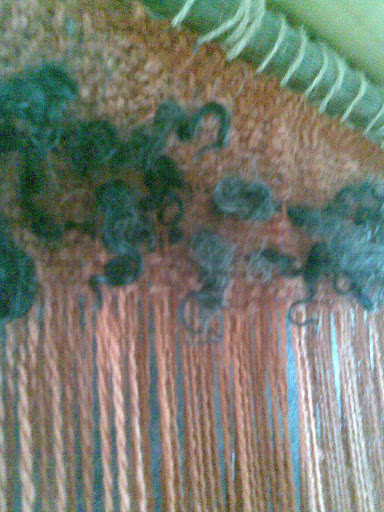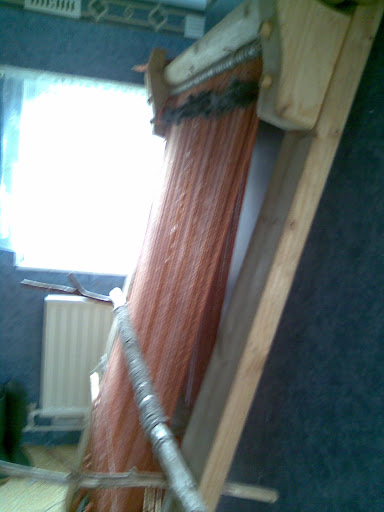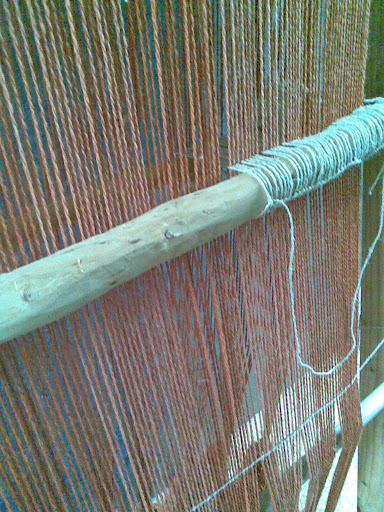The warp is two ply worsted spun norwegian rovings madder dyed. The rovings purchased from www.worldofwool.co.uk
Weft is woollen spun, plyed, madder dyed mixed British fleece
The pile is unspun gotland locks.
Authenticity is not an important issue for me but this rug/cloak compares well will actual Viking Age finds. Thor Ewig in his book 'Viking Clothing' mentions shaggy piled trade cloaks from Iceland measuring 5'4" x 2'8" being smaller than other trade cloaks because of the weight. Mine is 5'6" x 3' and ,yes, it is quite heavy but very warm. He also says this about the actual weave: "Viking piled fabrics from Kildonan, Isle of Eigg (AD850-900), from Jurby, Isle of Mann (c.AD900), from Lund Sweden (eleventh century) from Heynes, Iceland (tenth century), and from Volynia, Ukraine (9th century), all appear to have had a pile worked into the cloth during weaving.......Pile-woven cloth was often dyed; at least one example from York was dyed with madder, and one of the Birka examples is worked in a combination of red and blue dyed yarns. AN EXAMPLE FROM DUBLIN HAS A DARK BROWN PILE AND WEFT WOVEN AGAINST A RED WARP."
There is great variety in the base weave, tabby, as singles or plyed (as is mine) or finer twill weaves. Sometimes the background cloth was woven first in a coarse fairly open weave and the pile threaded in after in the form of a prespun yarn so there was plenty of variety.











